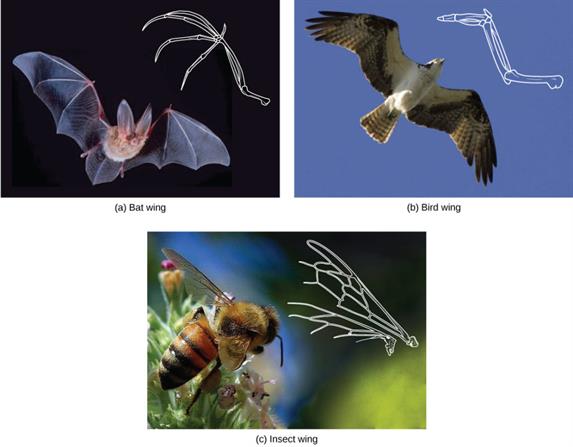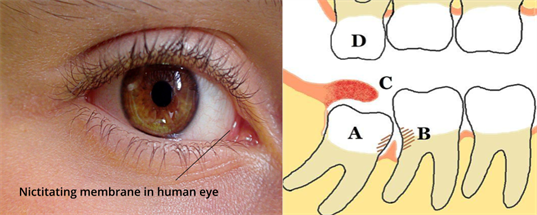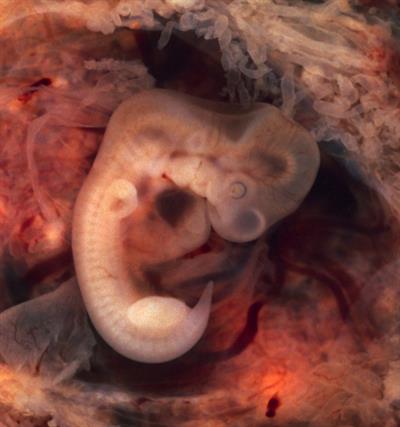PDF chapter test TRY NOW
Analogous organs:
The organs that have a different structural organization in different organisms but perform similar functions are known as analogous organs.
- They have different origins and developmental pattern
- The analogous organs are the result of convergent evolution.
- They are known as analogous organs due to the analogy in function.

Analogous organs
The role of a bat's wings, a bird's wings, and an insect's wings are all similar, but their basic architecture is different.
Differences between homologous and analogous organs:
S.No | Homologous organs | Analogous organs |
| 1. | These are morphologically different. | They morphologically resemble each other. |
| 2. | They have a similar internal architecture. | Their internal architecture is different. |
| 3. | They are seen in related organisms. | They are seen in unrelated organisms. |
| 4. | Their stages of development are similar. | Their stages of development are dissimilar. |
| 5. | They perform different functions. | They perform similar functions. |
| 6. | Their pattern of development is similar. | Their pattern of development is different. |
| 7. | These organs are a result of divergent evolution. | These organs are a result of convergent evolution. |
The organs present in rudimentary form and do not have any significant function are known as vestigial organs.
These organs were complete and functional in ancestral species, but due to their style of existence, they have become rudimentary in modern living forms.
The human body has about\(\ 90 \) vestigial organs.
The human body has about\(\ 90 \) vestigial organs.

Nictitating membrane and third molar tooth of human's vestigial organs
Example:
Nictitating membrane, segmental muscles of the abdomen, auricular muscles, panniculus carnosic (subcutaneous muscles), vermiform appendix, caudal vertebrae (coccyx or tail bone), wisdom teeth (third molars), hair on the body, nipples in the male are some of the vestigial organs.
The reappearance of certain ancestral characters which had either disappeared or reduced is known as atavism.

Tail growth in the human embryo
Reference:
https://openstax.org/books/biology/pages/1-introduction
https://en.wikipedia.org/wiki/Atavism#/media/File:Tubal_Pregnancy_with_embryo.jpg
https://www.pxfuel.com/en/free-photo-jjcre/download
https://upload.wikimedia.org/wikipedia/commons/thumb/9/97/Lower_mandibular_third_molar_impaction_pericoronitis_diagram.jpg/512px-Lower_mandibular_third_molar_impaction_pericoronitis_diagram.jpg
